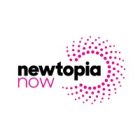

Can and should your CPG brand get in the business of caring?
Package design is a CPG brand’s most invaluable marketing tool and has the power to provide one of the strongest platforms for change. But if you are not already poised to reposition your brand as a responsible societal tool, those actions can be quite an undertaking. Where to start? Be realistic about your ability to overcome specific roadblocks.
Package Design Roadblock 1: Only some brands or products succeed as socially minded. Your company can still be mission-driven or contribute to the community, the planet, or whatever other passion may motivate stakeholders. Some products are positioned for a specific demographic who don’t expect their brands to fulfill these needs, especially at additional cost. Jumping on the bandwagon of “we care too” messaging can alienate your core consumer base. Look at your target demographic and ask if they care about the topics your company could affect.
Package Design Roadblock 2: You can only use your brand as a responsible societal tool if your company has a vision. Identifying the true purpose of your business is the only way to make real strides toward successful change. Jim Collins’ Hedgehog Model posits that your brand’s success lies at the perfect intersection of three things:
- What you’re passionate about.
- What you can be the best at.
- What drives your economic engine.
If you can’t pinpoint this spot, neither can your customer. It’s old news that consumers are paying attention–especially Gen Z. They will spend money on brands that align with their values and are more apt to boycott those that don’t.
“Talking about yourself won’t make others talk about you. It’s about the passion conversation, not the product conversation.”
Robin Phillips*
Package Design Roadblock 3: Idealism doesn’t always pay the bills. Money is a fundamental limitation of building a business. Spending on sustainable packaging or locally sourced raw materials is easier said than done, which are significantly more expensive. So what now?
The path through:
Allocating for social change in your marketing budget should be a line item. Using that spend for marketing is acceptable if you don’t appear overtly self-serving. You can be proud of these investments, and your consumers will feel the same.
Reframe your context. You budget for marketing; you invest in the people, partnerships, and co-packers that bring your product to life. Instead of putting spend on sustainable packaging toward the bottom line of your production costs, consider the ROI you may have through your marketing efforts. What new retailers may be more likely to consider your product with eco-conscious structures? Would this change get you better real estate on the shelves of Whole Foods? How much would that increase sales if you got eye-level positioning?
Draw on your existing position. The recent Newman’s Own brand refresh is a good example: Prior, their charity message was sharing equal weight with woodcut illustrations of ingredients that equally communicated “freshness and better for you.” The new design leans into a social impact message, elevating “let’s give it all away” and drawing a direct connection to the brand identity. What has been true of your brand all along but matters more now? Consider undergoing a brand refresh for better storytelling.
Only you can answer what will be valuable ROIs for your company. Will consumers consider this a viable reason to prefer your brand against the competition? Yes. Will it feel good to put something good into the world? I can say for sure that it will.
People are connecting with brands on a deeply emotional level; this article explores some ways to humanize your brand.
*Quote from Brains on Fire: Igniting Powerful, Sustainable, Word of Mouth Movements, Authors: Philips, Robin, Cordell, Greg, Church, Geno, and Jones, Spike









